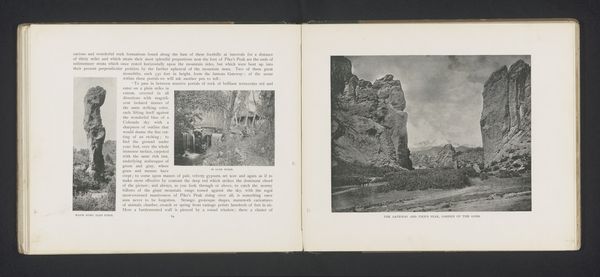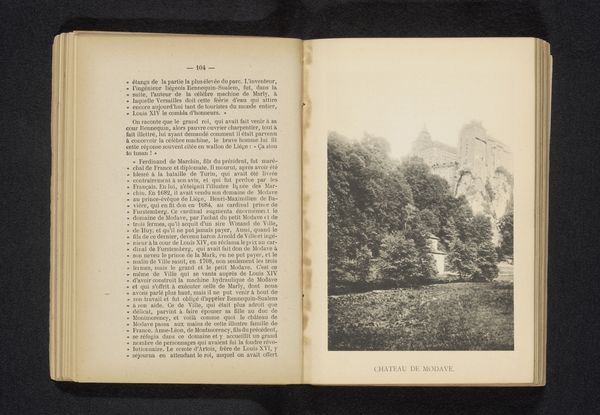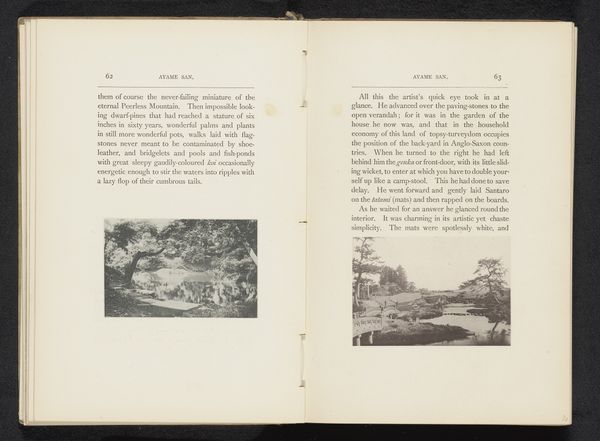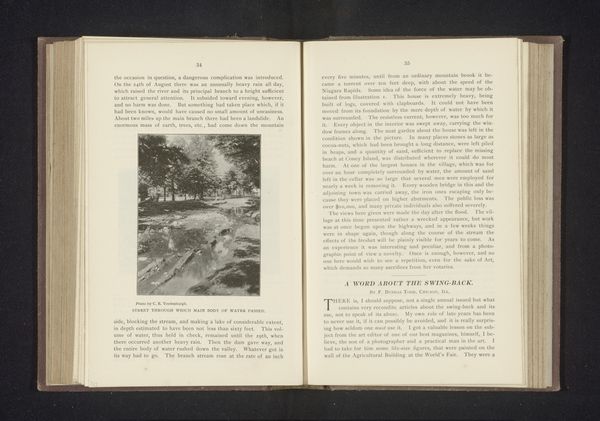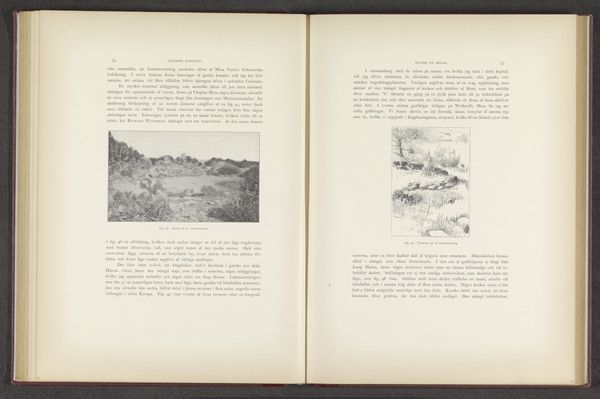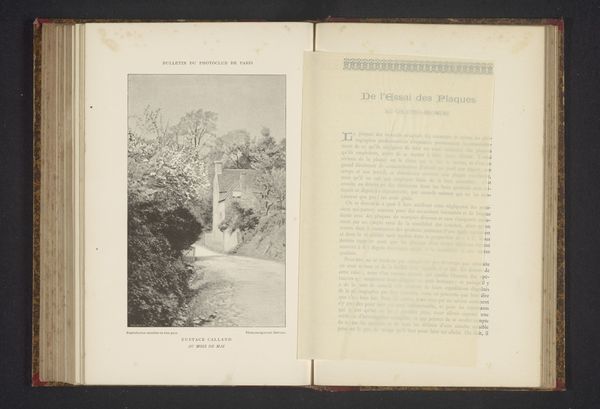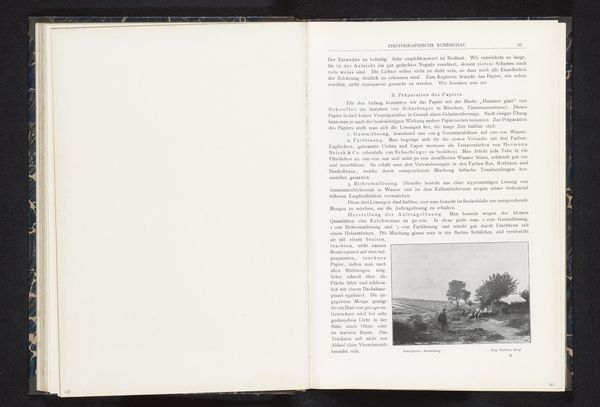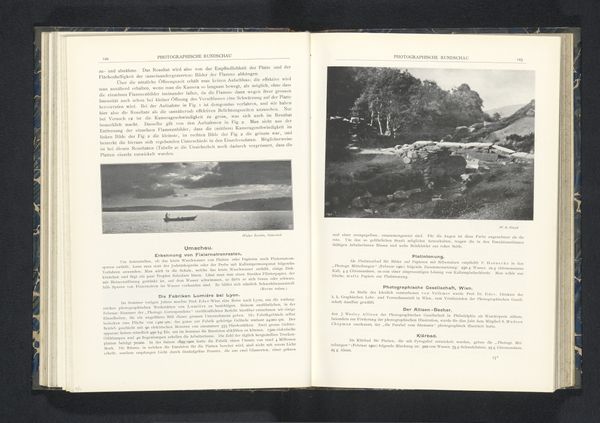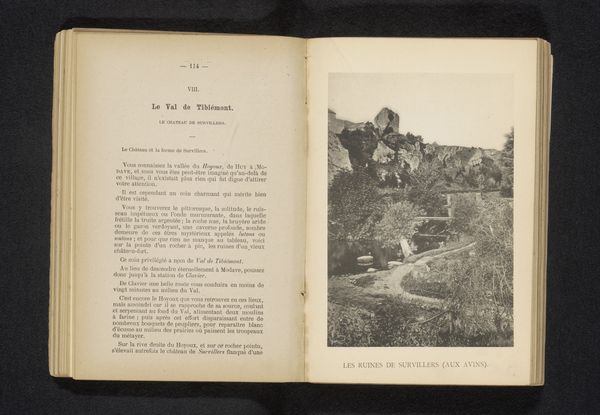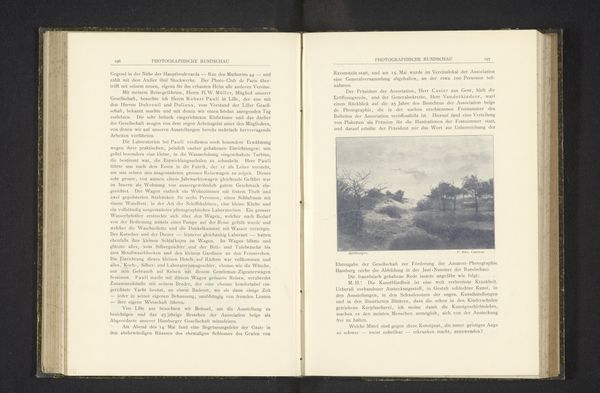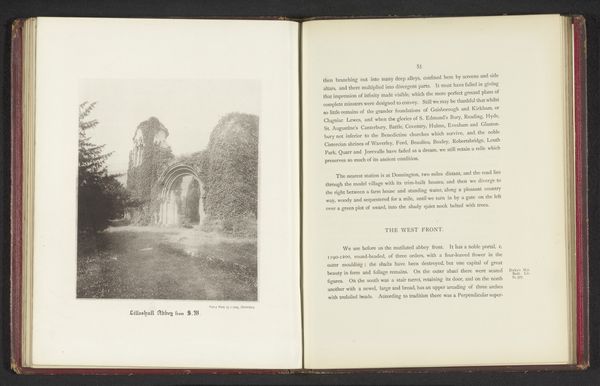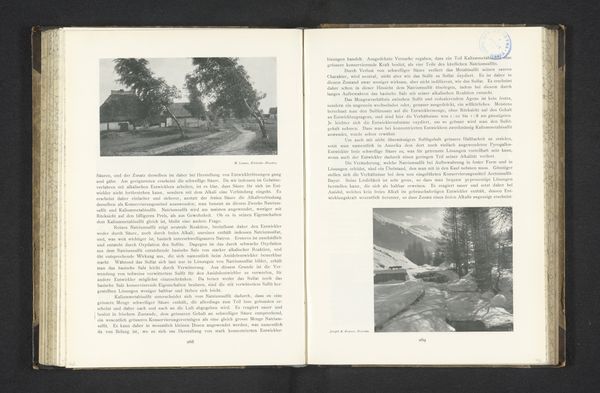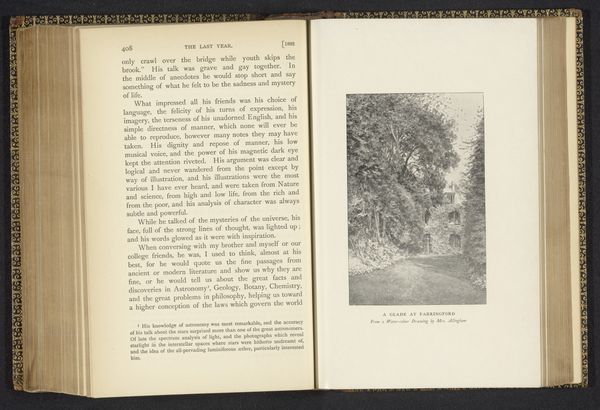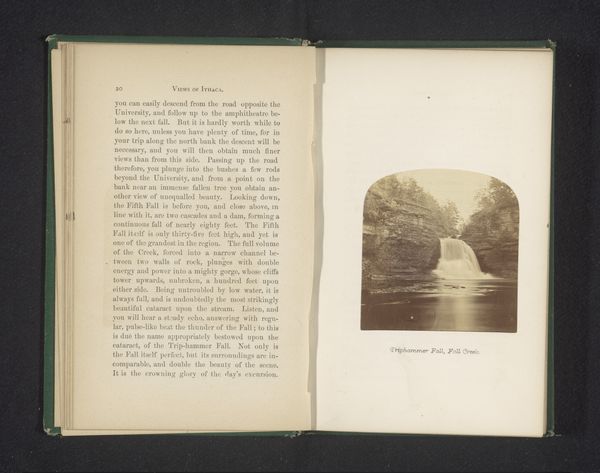
print, photography, albumen-print
#
pictorialism
# print
#
landscape
#
photography
#
albumen-print
Dimensions: height 159 mm, width 171 mm
Copyright: Rijks Museum: Open Domain
Curator: Let’s turn our attention to “Waterval,” a photograph that dates from before 1893. It’s presented as an albumen print. The maker remains anonymous, yet it offers a compelling glimpse into landscape photography of that era. Editor: It has this dreamy quality, like something you'd find illustrating a romantic novel. The cascade seems almost ethereal against the dark, craggy rocks. I immediately notice the contrasts. Curator: The albumen process itself, the way the egg whites are used to bind the image to the paper, lent itself to such a luminous aesthetic. You see it particularly in Pictorialist works where photographers sought to emulate the painterly effects in their photographic practice. Considering the labour involved, how would the commodification of nature reflected in prints such as this one shape ideas about preservation and natural resources in a time when industry began threatening landscapes around the world? Editor: That’s interesting! I hadn't thought about it in that way. In many regards, it captures not only the beauty but the very specific relationship that Europeans and colonizers had with land, often casting it as something to be consumed or conquered, even if only visually. Did photography become a tool to both document and claim such territories, turning landscapes into a form of consumable capital? How accessible were images like these to diverse communities at the time? Curator: Precisely! This photograph, presented in a printed album, highlights accessibility and portability. What was once grandeur became portable. Looking at the broader scope, what cultural narratives do photographic albums encourage when presenting and packaging faraway spaces and landmarks? Did it democratize seeing the world, or did it cement certain imperial visions of it? Editor: I think the answer probably lies in both. This particular image reminds me of a time where even experiencing nature was carefully mediated and presented through specific cultural lenses. How did the mass circulation of these images inform contemporary discourses of environmentalism? Curator: Indeed, these albums became commodities, contributing to cultural ideals, even defining tourism experiences. Editor: Thinking about the intersection of image, power, and nature really enriches how I see the scene before me. Curator: Absolutely, examining how landscape was constructed as both subject and object—and what role the production of photography played—opens new insights to appreciate its complex legacy.
Comments
No comments
Be the first to comment and join the conversation on the ultimate creative platform.
